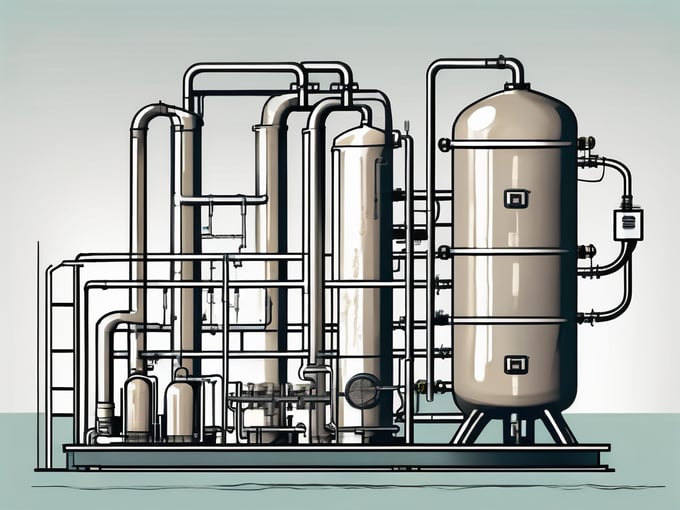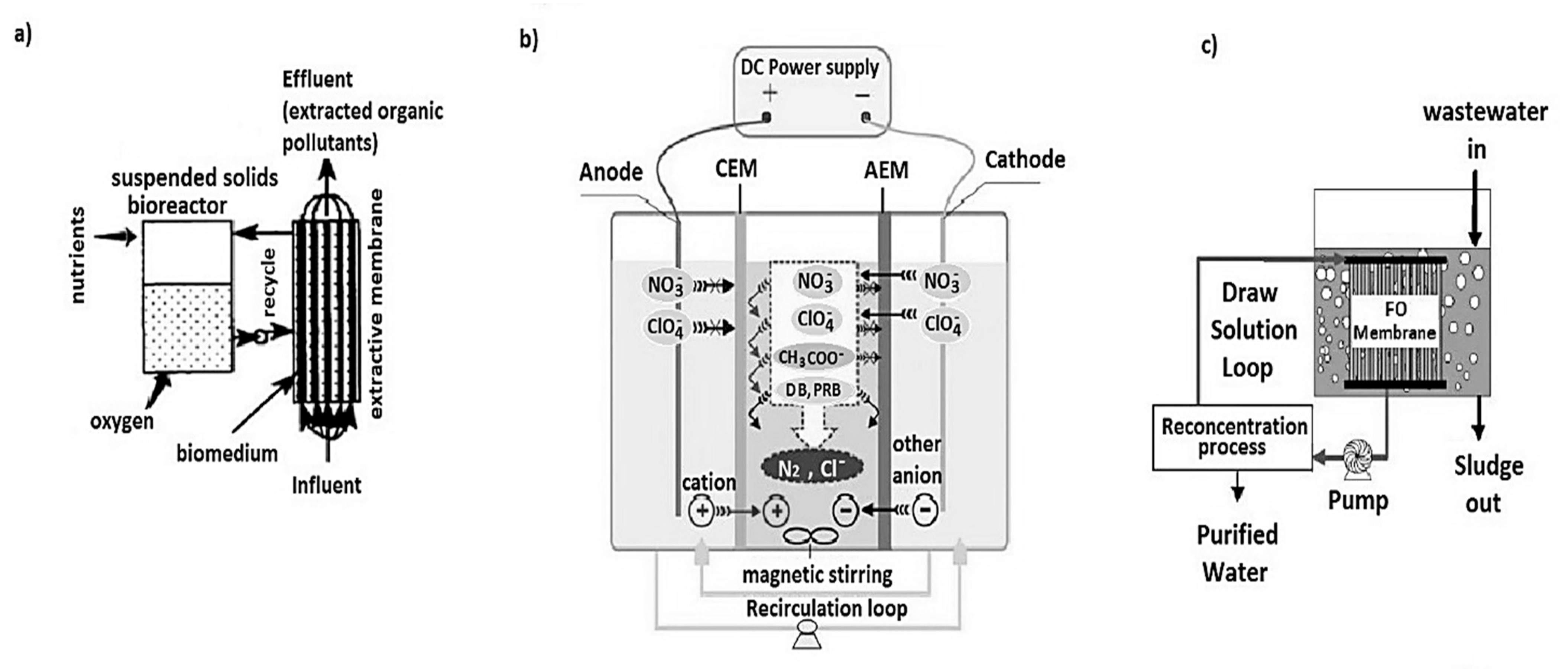How Membrane Bioreactor Can Help Meet Stringent Environmental Regulations
How Membrane Bioreactor Can Help Meet Stringent Environmental Regulations
Blog Article
The Advantages of Membrane Bioreactors in Sustainable Wastewater Administration
Membrane layer bioreactors (MBRs) represent a pivotal improvement in sustainable wastewater monitoring, properly merging organic treatment with sophisticated membrane layer filtration innovation. As the demand for lasting options magnifies, checking out the complex benefits of MBRs may expose unexpected effects for the future of wastewater treatment systems.
Overview of Membrane Layer Bioreactors
Membrane bioreactors (MBRs) stand for a significant innovation in wastewater treatment modern technology, incorporating organic deterioration with membrane layer filtering to boost the effectiveness of the treatment procedure. This innovative system incorporates the benefits of traditional turned on sludge processes with membrane layer technology, enabling boosted solid-liquid separation. MBRs make use of semi-permeable membranes to separate cured water from biomass, resulting in top notch effluent that can be reused or safely released right into the environment.
The operational layout of MBRs typically includes a bioreactor where microbes break down organic issue, adhered to by a membrane unit that filters the blended alcohol. This arrangement not only reduces the impact of the therapy center but likewise enables for greater biomass focus and decreased hydraulic retention times. MBRs are capable of dealing with a larger variety of contaminants, including nutrients and virus, making them ideal for numerous applications, from metropolitan wastewater therapy to industrial effluent processing.
The assimilation of MBRs right into wastewater monitoring systems is a measure of a growing trend towards efficient and lasting techniques in ecological design. Their capability to create top notch effluent while lessening area demands settings MBR technology as a key player in modern-day wastewater therapy remedies.
Enhanced Effluent Top Quality

The membrane purification process serves as a physical barrier, making it possible for the retention of bacteria and particle matter, which adds to a clearer and cleaner effluent (Membrane Bioreactor). MBRs operate at higher biomass concentrations than conventional turned on sludge systems, promoting more effective biodegradation of pollutants. This brings about a reduction in biochemical oxygen need (BODY) and complete suspended solids (TSS) degrees in the final effluent
In addition, MBRs demonstrate superb performance in dealing with challenging wastewater make-ups, such as industrial effluents and wastewater with high nutrient tons. Therefore, the effluent created is frequently of greater quality, permitting for more versatile disposal alternatives and decreased ecological impact. Eventually, the boosted effluent high quality attained via MBR innovation emphasizes its critical function ahead of time sustainable wastewater administration techniques.
Water Reuse Opportunities
The high-quality effluent generated by membrane bioreactors (MBRs) opens significant chances for water reuse in numerous applications. MBRs effectively eliminate impurities, consisting of pathogens, suspended solids, and raw material, causing cured water that meets or surpasses regulatory standards for reuse. This high quality permits the implementation of water reusing initiatives across diverse industries.
One famous application is in farming, where treated wastewater can be utilized for watering, advertising lasting farming methods while preserving fresh water resources. Furthermore, MBR-treated effluent can be used for industrial processes such as cooling, cleaning, and as a procedure water resource, significantly decreasing the demand for potable water in these operations.
In urban environments, MBRs facilitate making use of reclaimed water for landscape irrigation, toilet flushing, and other non-potable uses, adding to the total strength of water systems. Furthermore, the assimilation of MBR modern technology in decentralized systems help in handling localized water demands, specifically in water-scarce areas.
Minimized Environmental Impact
Exactly how imp source can the fostering of membrane bioreactors (MBRs) contribute to a minimized environmental influence in wastewater monitoring? MBRs substantially improve the treatment performance of wastewater while lessening ecological disruptions. Membrane Bioreactor.
Furthermore, MBRs run at reduced hydraulic retention times contrasted to conventional systems, causing smaller sized treatment plant impacts. This portable style lowers land use, therefore preserving natural habitats and biodiversity. The process additionally creates less sludge than typical techniques, alleviating disposal obstacles and decreasing greenhouse gas exhausts related to sludge monitoring.
In addition, MBRs assist in the recovery of beneficial resources, such as water and nutrients, adding to a round economy. By enabling water reuse for watering or industrial procedures, MBRs assist ease freshwater deficiency, therefore promoting sustainable water make use of techniques. Ultimately, the adoption of MBR innovation represents a considerable stride towards minimizing the environmental impact of wastewater administration systems.
Financial Benefits of MBRs

Furthermore, MBRs help with the manufacturing of premium effluent, which can be reused for different applications, such as agricultural irrigation and commercial procedures - Membrane Bioreactor. This reuse ability can substantially reduce water procurement costs, giving an economic motivation for sectors encountering rigid water guidelines
The small design of MBR systems additionally causes minimized land requirements, which is particularly beneficial in metropolitan areas where property is pricey. By lessening area, towns and sectors can save money on land procurement and maintenance expenses.
In addition, MBRs commonly require much less regular maintenance and have a longer life expectancy than conventional systems, further adding to cost financial savings. In summary, the financial advantages of MBRs-- varying from decreased functional expenses to land financial savings and effluent reuse-- make them a compelling selection for sustainable wastewater monitoring, using both long-lasting and prompt monetary advantages.
Conclusion
Additionally, MBRs contribute to reduced environmental impacts through compact designs and lower sludge generation. Economic benefits further boost their feasibility, making MBRs an encouraging solution for addressing the challenges of wastewater treatment and advertising sustainable Website resource management.
Membrane bioreactors (MBRs) represent a pivotal advancement in lasting wastewater monitoring, successfully combining biological treatment with innovative membrane layer filtering innovation.Membrane bioreactors (MBRs) represent a considerable development in wastewater treatment modern technology, incorporating biological degradation with membrane layer purification to improve the efficiency of the therapy procedure.Accomplishing enhanced effluent top quality is one of the most considerable advantages of making use of membrane layer bioreactors (MBRs) in wastewater treatment.In addition, MBRs show outstanding efficiency in treating challenging wastewater here are the findings make-ups, such as industrial effluents and wastewater with high nutrient lots.Incorporating membrane bioreactors (MBRs) right into wastewater management not just decreases ecological effect but additionally provides substantial economic benefits.
Report this page